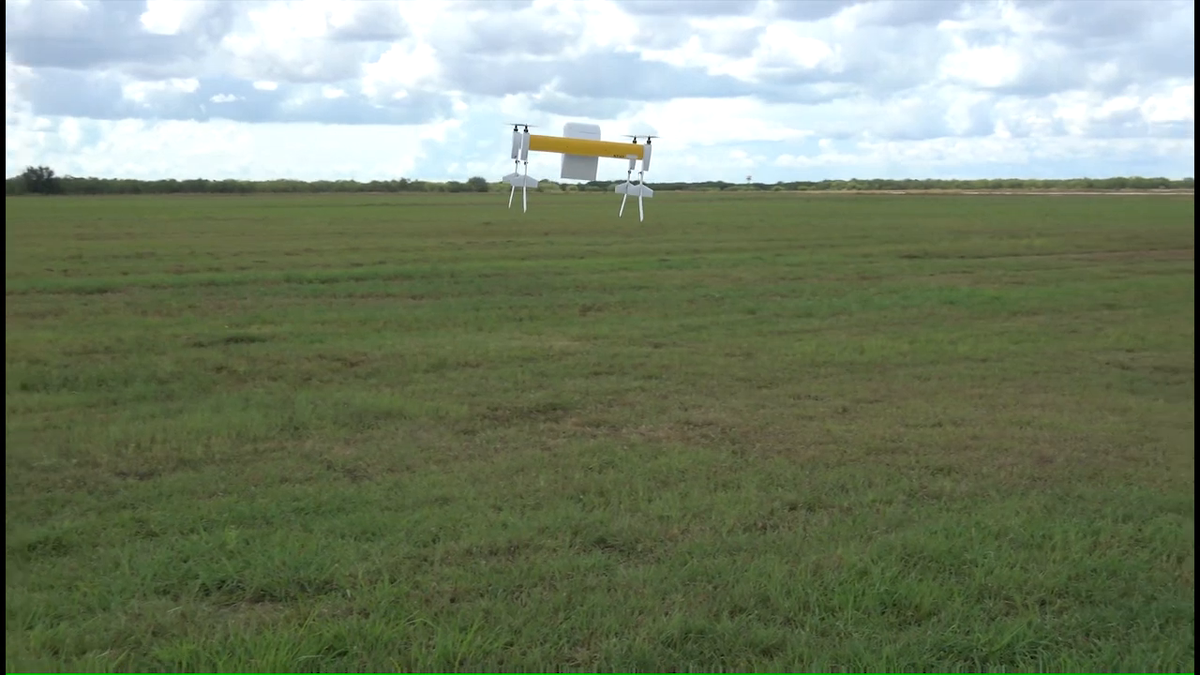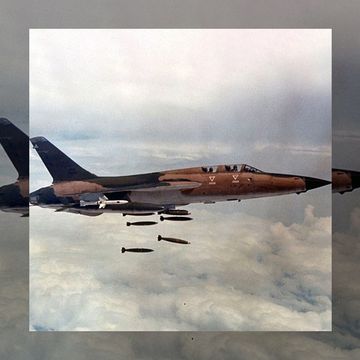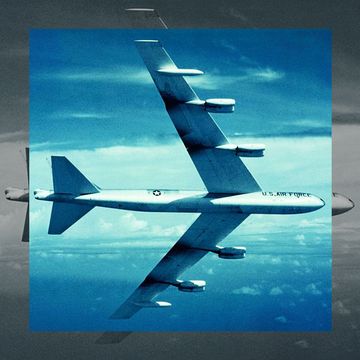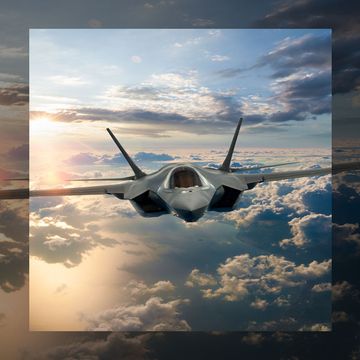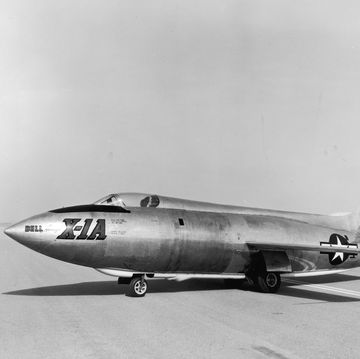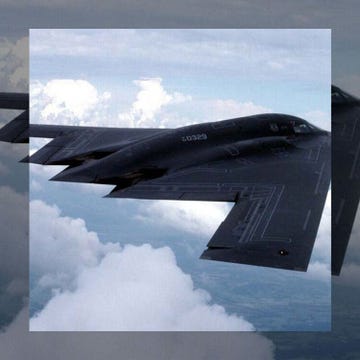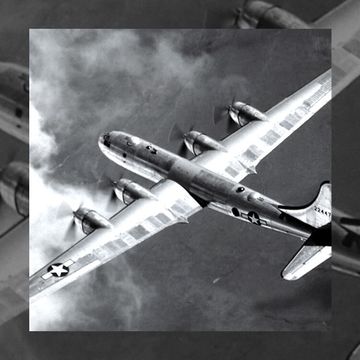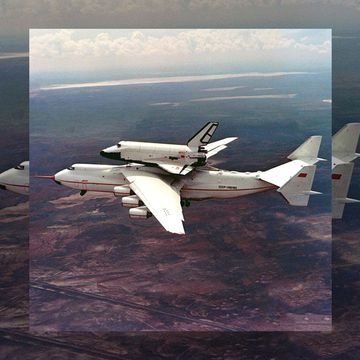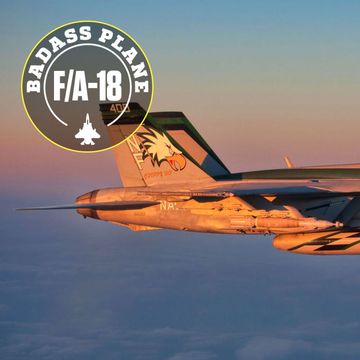With a sleek needle nose and a swept double-delta wing with two prominent nacelles, the supersonic SR-71 Blackbird spy plane is the stuff aviation legend. Although the SR-71 first flew in late December of 1964 and hasn't been in service for almost 25 years, it's still the fastest plane that's ever seen action.
Powered by two Pratt & Whitney J58 turboramjets, the jet could fly faster than Mach 3 and climb so high that the crew needed to wear pressure suits so as not to pass out. Basically, the J58 combines the functionality of a turbojet and a ramjet. Below Mach 2.0, air is pulled into the inlet, slowed down and then compressed by a turbine-driven multistage compressor. Afterwards, the air is mixed with fuel in the burners, with more fuel combined to the exhaust at the afterburner stage.
But at speeds greater than Mach 2.2, six bypass tubes around the engine open and move air directly from the fourth stage of the compressor to the afterburner. This gives the engine greater fuel efficiency.
Its supersonic speed and low radar profile (owing to its swept design and black ferrite iron radar-absorbing paint) made the Blackbird a difficult target. The military designed this super-jet to take over a number of missions performed by the much slower U-2 reconnaissance plane, which had become increasingly vulnerable to Soviet interceptor aircraft and surface-to-air missiles. Indeed, in 1960, a U-2 aircraft was shot down over the Soviet Union and pilot Gary Powers was taken prisoner. Then, two years, later another U-2 was taken out over Cuba.
Still, flying the plane was tricky. Both the pilot and navigator had to be in good shape because the latter lacked flight controls and the former didn't have a navigation set. If the pilot passed out, the navigator's best hope was that the plane was on auto-pilot at the time. That way, he could program a destination into the Astro tracker.
If the reverse happened, the pilot would have to make due with a standby "whiskey compass." (According to one theory, the "whiskey" is NATO phonetic for W, which stands for "wet" and refers to old compasses filled with kerosene.)
Going at Mach 3 also generated temperatures that could melt typical aluminum airframes, so the SR-71 had to be covered in titanium. However, this titanium proved tricky to handle on the assembly line.
As Lockheed Martin says on its website: "Conventional cadmium-plated steel tools, it was soon learned, embrittled the titanium on contact; so new tools were designed and fabricated—out of titanium."
The Blackbird was subjected to all kinds of extremes. After speeding up to such incredible velocities, it had to slow down for mid-air refueling from a much slower tanker. That caused the skin of the plane to cool down and contract, which meant the SR-71 was often a leaky mess.
Nevertheless, the SR-71 set a number of air performance records. For example, in July 1976, it reached a staggering altitude of 85,068.997 ft.
In 1990, a Blackbird flew from West Coast of the United States to the East Coast in a little shy of one hour and eight minutes, hitting an average speed to 2,124.51 mph.
Likewise, the aircraft had an impressive military record. The Blackbird penetrated Soviet and Chinese airspace, as well as that of other communist states. It studied Israeli and Arab troop positions during the 1973 Yom Kippur War; provided support for the U.S. bombing mission against Libya in 1986; and had been used over a wide range of countries, from South Africa to Nicaragua. Throughout all these missions, no SR-71 Blackbird has ever been shot down.
Over the years, 32 SR-71 Blackbirds – as well as 13 similar-looking A-12 Oxcarts (a single-seat CIA precursor plane developed by Lockheed Skunkworks as part of Project Archangel) and three YF-12 prototypes and two drone-launching M-21s – have been built.
Nothing lasts forever, though. The 1980s saw an increase in threats capable to countering the SR-71, including improved enemy air defenses and the introduction of the MiG-31, which was armed with the R-33 air-to-air missile could intercept the Blackbird. The U.S. military turned to spy satellites, which flew high above these threats, and put an end to the SR-71 program in 1990.
Today, you can find some 30 remaining Blackbirds and Oxcarts scattered in museums and US Air Force bases throughout the country, for example, at the USAF Museum, in Dayton, Ohio, and the National Air and Space Museum, in Washington, D.C.
There have been rumors of a secret follow-on spy plane called the Aurora, but they remain unproven. Ironically, the older U-2 is still in service because the high-altitude Northrop Grumman RQ-4 Global Hawk drone, which was supposed to replace the aging aircraft, has yet to live up to its billing. The U-2 can still fly higher than the Global Hawk, carry a greater payload, and its sensors have more of a slant range. The Global Hawk also lacks de-icing equipment and countermeasures against Russian SAMs. We may be entering the age of drones, but old-fashioned piloted planes can still do a thing or two.
As reported in PM, NASA is currently the revisiting the supersonic spy plane concept. It recently awarded a contract to Lockheed Martin Skunk to test the feasibility of the SR-2, a supersonic drone that would fly almost twice the speed of the Blackbird. The idea is that speed would play the role that stealth once did in beating enemy air defense network. Lockheed says that plane, if developed, could be ready in 2030.


